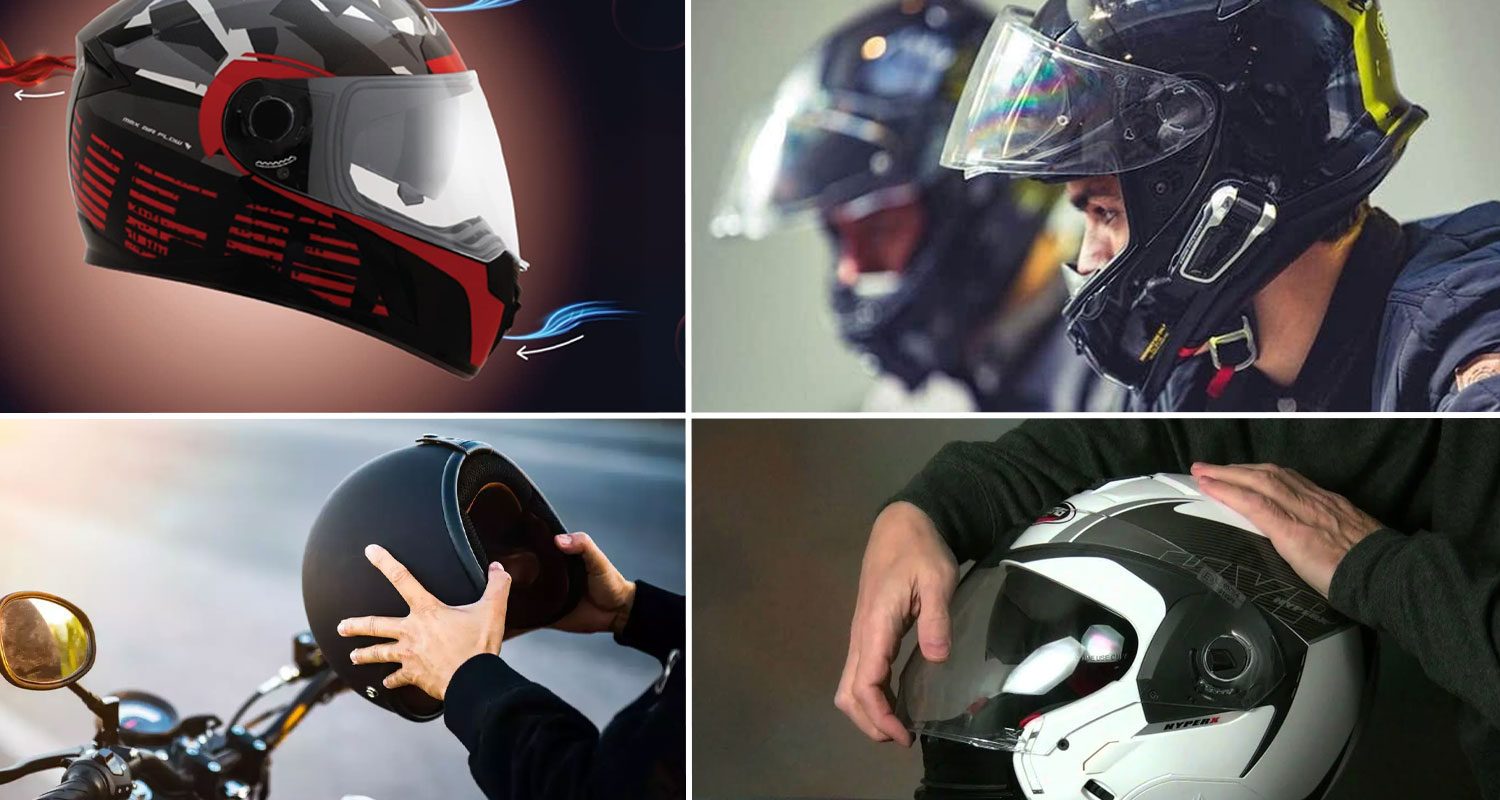Buy, sell and find just about anything using the app on your mobile.

When it comes to motorcycle safety, a few decisions are important such as choosing the right helmet. The ongoing debate between open face vs full face helmets centers around finding the perfect balance between protection, comfort, and practicality. This comprehensive guide explores the key differences, safety benefits, and practical considerations to help you make an informed decision about which helmet style best suits your riding needs. So, let us begin.
Full-face helmets provide comprehensive coverage while half-face helmets cover only the top and sides of the head, offering less protection but providing better ventilation and a more open feel.
Let’s understand full face helmet vs half face in detail:-

Full-face helmets completely enclose the head, featuring a chin bar and face shield that provides comprehensive protection. These helmets are characterized by their all-in-one design, covering the entire head to guard against injuries.
Key Features
Explore a Wide Range of Pre-Owned Bikes, Scooters & Bicycles on OLX

Open-face helmets, sometimes called three-quarter or half helmets, cover the top, sides, and back of the head but leave the face exposed. These helmets typically weigh less and provide more airflow than their full-face counterparts.
Key Features
The debate between full-face helmet vs half-face helmet designs ultimately narrows down to safety statistics and real-world performance.
Multiple studies have consistently demonstrated the superior protection offered by full-face designs:
Beyond crash impact protection, helmets also shield riders from environmental hazards.
Here is a table for better understanding:-
| Protection Type | Full-Face | Open-Face |
| Debris/Insects | Excellent | Poor to Fair |
| Wind/Noise | Excellent | Fair |
| Rain/Weather | Excellent | Poor |
| UV Exposure | Excellent | Fair (Depends on the visor) |

While safety should be paramount, several practical factors influence helmet choice:
Open-face helmets generally offer advantages in comfort and convenience:
Your typical riding environment significantly impacts which helmet style makes more sense. For instance:-

Choosing between an open-face vs full-face helmet depends on your riding style, comfort preferences, and safety priorities. Here’s who should pick which one.
Check Out: Second Hand Royal Enfield Classic 350
Most motorcycle safety experts and organizations recommend full-face helmets for all riders regardless of experience level or motorcycle type. The added protection for the face and chin area dramatically improves safety outcomes in crash scenarios.
According to the Motorcycle Safety Foundation: “A full-face helmet that meets DOT standards provides the most protection for motorcycle riders. While other helmet types may be more comfortable in certain situations, they compromise safety by leaving the face and chin exposed.”
When comparing open-face vs full-face helmet options, the evidence clearly demonstrates that full-face helmets offer superior protection in nearly all situations. However, the “best” helmet ultimately depends on your personal riding style, frequency, environment, and comfort needs.
If safety is your absolute priority, a quality full-face helmet from a reputable manufacturer is the clear choice. If you value the open-air feeling and primarily ride at lower speeds in urban environments, an open-face helmet certified to safety standards still provides meaningful protection compared to riding without a helmet.
Remember that the best helmet is one that you’ll wear consistently on every ride. Choose a helmet that balances your safety needs with comfort factors that ensure you’ll actually use it.
Pro tip: You can explore pre-loved helmets on platforms like OLX find great deals and make an informed choice.
Yes, studies consistently show that full-face helmets provide better protection and security when riding a bike.
High-quality full-face helmets are designed with wide eye ports, offering peripheral vision similar to that of open-face helmets, ensuring a clear view without compromising safety.
Yes, open-face helmets that meet DOT standards are legal in all states with helmet requirements. However, some states do not have helmet laws.
Modern full-face helmets feature advanced ventilation systems that significantly reduce heat buildup. Many riders find them comfortable year-round with proper ventilation settings.
Both styles can accommodate glasses, though some riders find open-face helmets slightly more convenient. Many full-face helmets now include “eyeglass channels” in the padding.
Also Read:
| Different Types of Helmets: Importance and Effectiveness |
| Best Helmet Brands in India and Around the World |